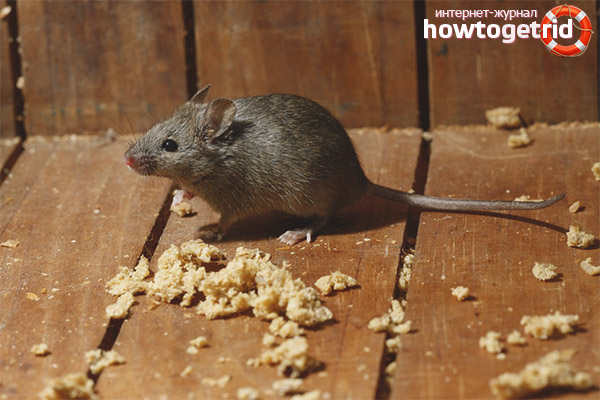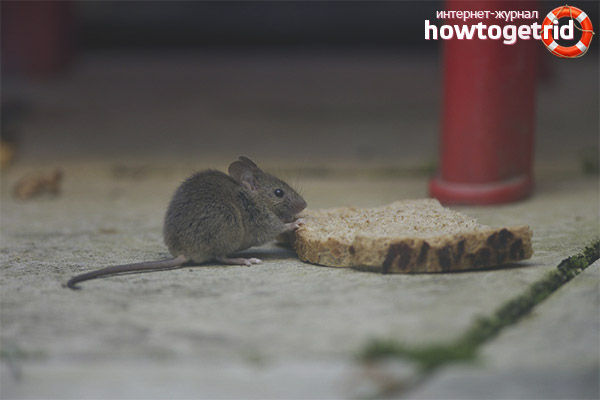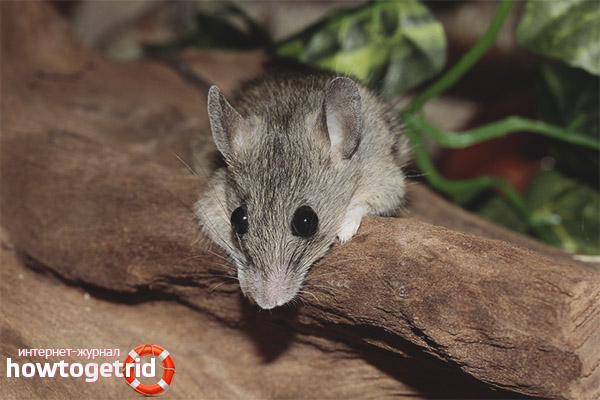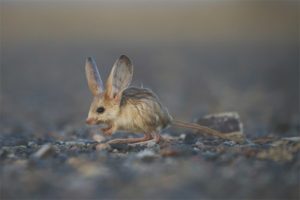The content of the article
In most people, mice are associated with a pest animal. Nevertheless, these rodents are very friendly and sociable, and after a closer acquaintance it turns out that they have many advantages. Mice can be ideal companions for even the smallest children, because their breeding and care does not require such participation, as is the case with a rabbit or guinea pig.
The domestic mouse (mus musculus) is a small mammal belonging to the order of rodents and the mouse family. Initially, mice lived in fields and steppes, over time, when people switched to a sedentary lifestyle, mice became inhabitants of areas in which products collected by humans are stored. Houses, sheds, grain stocks are first-class housing for rodents and can serve as protection and shelter from predators.
Soon the mice turned into pests, which the man tried in vain to destroy. Their high adaptability and rapid spread make any destruction attempt in vain. Originally from the Asian continent, she moved to Europe in the 1600s. It was only in the 19th century that Europeans became interested in the mouse as a companion. Later it began to be used in medical research. Indeed, mouse and human share 95% of the total genes. The small size, rapid development and high fertility make this rodent an ideal animal for research in various fields, such as: genetics, pharmacology, etc.
You should know that in laboratories a huge number of rodents die every year. Thus, despite their sabotage, a person should respect the mice for the fact that they have saved more than one human life.
Description
The weight of the female ranges from 20 to 35 grams, the male can weigh 20-50 grams. The heart rate in rodents is quite high - from 325 to 700 beats per minute. The average body temperature is 37.1 ° C. The average life expectancy is from one and a half to three years.
The digestive system of the mouse absorbs cereals best. A coprophage mouse, that is, it eats its litter, this allows it to restore vitamins. She sees very well in the dark, and the light can cause her discomfort. A rodent distinguishes moving objects better than stationary ones.
The tail maintains body heat and helps to navigate in space. The mouse has a very well-developed sense of smell, its nose allows you to learn about the environment, to recognize other mice and find the way. Typically, rodents disperse small drops of urine along the way, emitting a characteristic odor that helps them return to their starting point. They have no sweat glands, so they do not sweat. Hearing in mice is very developed, so they are very sensitive to ultrasound.
Character
The animal is rather shy, but the correct taming makes it affectionate and obedient. Curiosity and greed make the rodent approach a person. Sometimes mice are aggressive, but, as a rule, they are quite kind in nature, bites are quite rare.
The mouse is a very neat animal. Typically, rodents like to communicate with people and will be happy to spend time in the company of a person.The small size and kind nature make the rodent a suitable friend for young children (from 6 years old).
By nature, a mouse is a herd of animals that lives in a group in accordance with established rules. However, in captivity, males can show their dominance, therefore they must live alone, otherwise they will eventually fight, and may even kill each other. Sometimes males, blood relatives, can live together. Since it is a nocturnal animal, it will sleep most of the day.
Habitat

Domestic mice are widespread in a wide variety of urban habitats, including homes, factories, warehouses and shops. In rural areas, they prefer to settle in farm buildings or near landfills. Urban populations of domestic mice living in and around buildings usually do not dig holes, but hide in crevices in the walls and under the floor. They usually build nests out of paper and fabric for added warmth. In rural areas, rodents try to avoid open habitats, so they have to dig shallow holes in which they collect grain, grass and ears of corn.
If we talk about the living conditions of tamed bears, then for the rodent you need to create certain conditions. The most important thing is that the mouse has its own small dwelling, for example, a cell. Do not place the cage in a room with bright lighting. In addition, it is necessary that there are no drafts in the cell. The size of the house should be at least 600 cm (a 900 cm cage would be the best option). There are different models of houses. Despite the fact that plastic cages are very attractive, they are quite difficult to clean and difficult to ventilate. Wire models are suitable provided that the distance between the rods does not exceed 0.8 cm. The most suitable and safe cells are plexiglass with an upper mesh.
Cell location is important for mouse well-being. The room should not burn bright light, which will irritate the rodent. It should not be placed near a TV or computer, because ultrasound can adversely affect the animal. An ideal option would be to place the cage in the living room or in the kitchen. Terrariums and plastic storage containers can also be used as mouse shelters if they are well protected and ventilated.
Food
The mouse is omnivorous, but prefers cereal products. She is very greedy and very selective. The rodent will sort its food into one that you like and one that you don't like. To avoid this, it is recommended to feed the mouse with extruded food. This food contains all the nutrients that the mouse needs, and it will not sort it.
Ideally, the diet should contain from 14 to 16% crude protein, 4% fat and 6% fiber. Food and water should be available at all times. For a change, sometimes a rodent can be fed with tasty products, namely:
- Fruits and vegetables. Pineapple, asparagus, carrots, celery, cherry, pumpkin, zucchini, strawberries, melon, turnip, watermelon, papaya, pepper, apple, plum, radish, grape, banana. Fruits and vegetables should be washed and cleaned of seeds and seeds. You can feed vegetables and fruits no more than 1 time per week, otherwise it can cause diarrhea.
- Cereals and seeds. Oats, rice, cornflakes, bread, couscous, popped rice, multi-grain bread and crackers, sunflower seeds, pumpkin, corn kernel.
- Other products. Soy milk, cheese, egg, rice and raw pasta, hard bread, ham, chicken breast.
Warning! Never give your mouse chocolate, pastries, onions, too fatty, sweet or salty foods.
Care
- Bath. The mouse is a fairly neat animal; usually it does not need a bath. If the rodent gets dirty, you can wipe it with a damp cloth. The mouse should not be placed in water; she will not like it. In addition, there is a risk that she will catch a cold.
- Cleaning. Again, this procedure is optional, the mouse knows how to do it yourself. But sometimes cleaning can be done. This will help to remove dead hair and smooth the hair. A toothbrush with very soft bristles should be used for the cleaning procedure.
- Claws. Do not try to cut the claws with nail clippers, because you can damage them.
- Care in old age. The mouse ages very quickly, 1 month equals 2 human years. She becomes calmer, less active and sleeps a lot, her coat becomes less beautiful, because she supports herself much less. Keep it warm, give her favorite treats and treat her with care.
Breeding
The mouse can breed all year round. The recommended breeding age for the female is from 3 to 6 months. A mouse can give birth no more than twice during its life. The male is fertile year round.
Pregnancy lasts from 19-21 days. It is extremely important to separate the male from the female before the calves are born, so that the male can not eat them or fertilize the female again, which caused serious harm to the health of the mother and mice. You can put another female in the same cage, she will take care of the children, wash and warm them, which will help the mother. This can be done provided that the females were already familiar before pregnancy and got along well. It is imperative not to add new individuals to the cell during pregnancy and after childbirth. Before giving birth, make available to the female the materials necessary for making a warm and cozy nest. It can be napkins, paper, cardboard, hay, etc.
Cannibalism
Sometimes mice eat their offspring. This does not mean that the mouse is aggressive or crazy, as this is quite normal for them. This behavior may be due to several reasons:
- Lack of food or drink.
- The first litter.
- Exhaustion or stress.
- By mistake (after giving birth, the mouse eats the placenta and can accidentally eat a baby).
- The number of children is too large.
- Stillborn and ugly cub.
Therefore, it is important that the mouse always has enough food and water. Also, do not forget to clean the cage.
Taming
As a rule, the mouse is not afraid of communicating with a person. It is important to give the rodent a few days so that it can get used to the new environment (2-3 days). Try to pull the mouse out of the cage and feed it from the hands. Over time, when it becomes a habit, it will come on its own. While eating, try to hold it in your hands, stroke it, increasing the frequency and duration of its exits. The more care for the rodent, the more confident and obedient it will be. Whenever the time comes for mealtimes, make the same sound: the click of a lip or tongue. This is necessary so that the mouse gets used to the sound and runs on it automatically. Some mice do not like to be manipulated, so taming is not always successful.
Care Tips
The mouse needs daily walks outside the cage, where it could have fun and relax. To do this, you can use a small park or create a playground for a small rodent. Unleash your imagination, take up the creation of a mini-platform using cardboard and plastic boxes.
Living alone, rodents have an increased need for attention and human contact. The mouse will love to climb through its hair, sneak into its sleeves and hide in pockets.
If for some reason you need to take the mouse with you, then you need to transport it in a special cage designed specifically for this purpose. Choose plastic shipping cages. These types of cells can protect the animal from drafts, and they are also more comfortable for the pet and reduce the risk of escaping. When transporting into the cage, it is forbidden to place vessels with water, since there is a risk that the liquid will spill. It is better to periodically feed the animal with fruits or juicy vegetables that will not allow the mouse to feel thirsty. During breaks, you can give the rodent a drink from a container of water.
Never leave your mouse in a car with windows closed or in direct sunlight.
Video: interesting facts about mice












Submit